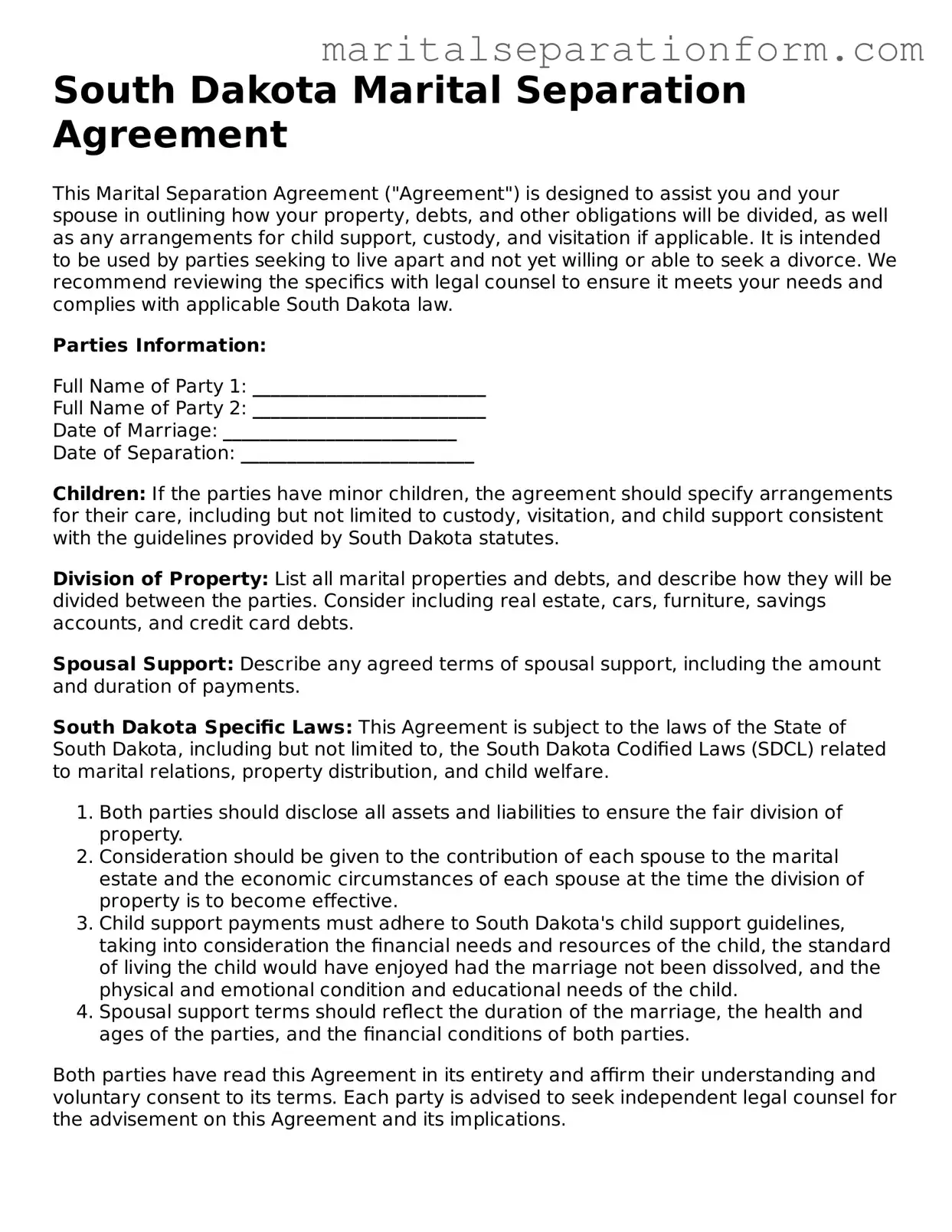South Dakota Marital Separation Agreement
This Marital Separation Agreement ("Agreement") is designed to assist you and your spouse in outlining how your property, debts, and other obligations will be divided, as well as any arrangements for child support, custody, and visitation if applicable. It is intended to be used by parties seeking to live apart and not yet willing or able to seek a divorce. We recommend reviewing the specifics with legal counsel to ensure it meets your needs and complies with applicable South Dakota law.
Parties Information:
Full Name of Party 1: _________________________
Full Name of Party 2: _________________________
Date of Marriage: _________________________
Date of Separation: _________________________
Children: If the parties have minor children, the agreement should specify arrangements for their care, including but not limited to custody, visitation, and child support consistent with the guidelines provided by South Dakota statutes.
Division of Property: List all marital properties and debts, and describe how they will be divided between the parties. Consider including real estate, cars, furniture, savings accounts, and credit card debts.
Spousal Support: Describe any agreed terms of spousal support, including the amount and duration of payments.
South Dakota Specific Laws: This Agreement is subject to the laws of the State of South Dakota, including but not limited to, the South Dakota Codified Laws (SDCL) related to marital relations, property distribution, and child welfare.
- Both parties should disclose all assets and liabilities to ensure the fair division of property.
- Consideration should be given to the contribution of each spouse to the marital estate and the economic circumstances of each spouse at the time the division of property is to become effective.
- Child support payments must adhere to South Dakota's child support guidelines, taking into consideration the financial needs and resources of the child, the standard of living the child would have enjoyed had the marriage not been dissolved, and the physical and emotional condition and educational needs of the child.
- Spousal support terms should reflect the duration of the marriage, the health and ages of the parties, and the financial conditions of both parties.
Both parties have read this Agreement in its entirety and affirm their understanding and voluntary consent to its terms. Each party is advised to seek independent legal counsel for the advisement on this Agreement and its implications.
Signatures:
Party 1: _________________________ Date: _________________________
Party 2: _________________________ Date: _________________________
